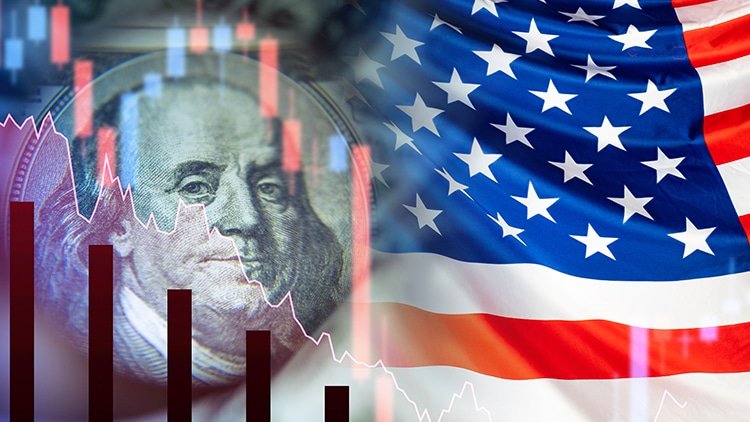Inflation affects everything from grocery prices to mortgage rates, making it a crucial factor in the economy. One of the most important measures of inflation is PCE Inflation Data (Personal Consumption Expenditures Price Index). The Federal Reserve closely monitors this data to set monetary policy and control inflation. In this article, we’ll break down what PCE Inflation Data is, why it matters, and how it impacts you.
What Is PCE Inflation Data?
PCE Inflation Data measures the changes in prices of goods and services purchased by consumers. It is considered a more comprehensive indicator of inflation compared to the Consumer Price Index (CPI) because it accounts for shifts in consumer behavior.
How Is PCE Inflation Calculated?
PCE Inflation is derived from personal spending data collected by the Bureau of Economic Analysis (BEA). The key components include:
- Goods – Items like food, clothing, electronics, and vehicles.
- Services – Healthcare, rent, education, and financial services.
- Core PCE – Excludes volatile food and energy prices for a more stable measure.
Why Is PCE a More Reliable Measure of Inflation?
Unlike CPI, which tracks a fixed basket of goods and services, PCE Inflation adjusts for changes in consumer spending patterns. If people switch to cheaper alternatives when prices rise, PCE reflects that change, making it a more accurate representation of real-world inflation.
PCE vs. CPI: What’s the Difference?
Many people are familiar with the Consumer Price Index (CPI), but how does it compare to PCE?
| Feature | PCE Inflation Data | Consumer Price Index (CPI) |
|---|---|---|
| Coverage | Broader (includes employer-paid expenses) | Focuses on out-of-pocket costs |
| Weighting | Adjusts for consumer behavior changes | Fixed basket of goods & services |
| Used By | Federal Reserve | Government agencies, businesses |
| Volatility | Less volatile (excludes food & energy in Core PCE) | More volatile |
The Federal Reserve prefers PCE Inflation because it provides a more accurate picture of long-term inflation trends.
Why Does the Federal Reserve Use PCE Inflation Data?

The Federal Reserve relies on PCE Inflation Data to make interest rate decisions. If inflation is too high, the Fed may raise rates to slow spending and stabilize prices. If inflation is too low, the Fed may lower rates to encourage borrowing and investment.
How PCE Data Influences Interest Rates
- High PCE Inflation → Fed raises interest rates → Borrowing becomes expensive → Consumer spending slows.
- Low PCE Inflation → Fed lowers interest rates → Borrowing becomes cheaper → Consumer spending increases.
By managing inflation through interest rates, the Fed aims to maintain economic stability and growth.
How PCE Inflation Impacts You
1. Interest Rates and Loans
When PCE inflation rises, the Fed may increase interest rates, making mortgages, car loans, and credit cards more expensive. Conversely, if inflation is low, borrowing becomes cheaper, encouraging spending and investment.
2. Wages and Employment
Higher inflation can lead to increased wages as businesses adjust for rising costs. However, if inflation rises too quickly, it can reduce purchasing power, making everyday expenses more costly.
3. Stock Market Reactions
Investors closely watch PCE data. Rising inflation can trigger market volatility, as higher interest rates can impact company profits. Stable inflation supports steady market growth.
4. Cost of Living
Inflation affects daily expenses like food, rent, healthcare, and transportation. If PCE inflation is high, the cost of living increases, impacting household budgets.
5. Savings and Investments
When inflation rises, the real value of savings decreases unless interest rates keep pace. Investors may shift towards assets like stocks, real estate, or inflation-protected securities to maintain purchasing power.
Recent Trends in PCE Inflation Data
Over the past few years, PCE inflation has fluctuated due to various factors:
- Supply Chain Disruptions – COVID-19 and global shipping issues led to higher costs for goods.
- Energy Price Swings – Oil and gas prices impact overall inflation trends.
- Government Stimulus – Increased consumer spending during economic recovery boosted inflation.
- Monetary Policy Adjustments – The Federal Reserve has raised interest rates to control inflation.
Key Takeaways from Recent Data
- Core PCE (excluding food & energy) remains a critical focus for policymakers.
- Inflation peaked in recent years but has started to moderate due to higher interest rates.
- Future trends will depend on global economic conditions, wage growth, and supply chain stability.
How to Stay Updated on PCE Inflation Data
- Follow Monthly PCE Reports – Published by the Bureau of Economic Analysis (BEA).
- Monitor Federal Reserve Announcements – Interest rate decisions impact inflation trends.
- Read Financial News – Major publications analyze inflation data and economic forecasts.
- Use Inflation Tracking Tools – Websites and financial apps provide real-time updates.
What Can You Do to Protect Yourself from Inflation?
While individuals cannot control inflation, you can take steps to safeguard your finances:
- Budget Wisely – Track expenses and cut unnecessary spending.
- Invest in Inflation-Protected Assets – Treasury Inflation-Protected Securities (TIPS), real estate, and stocks.
- Negotiate Wages – Ensure your salary keeps up with inflation.
- Reduce High-Interest Debt – Rising interest rates make debt more expensive.
- Diversify Income Sources – Side businesses or investments can provide financial security.
Conclusion
PCE Inflation Data is a vital measure of price changes in the economy. The Federal Reserve uses it to guide monetary policy, which impacts interest rates, wages, and the overall cost of living. Understanding PCE trends can help you make informed financial decisions, whether you’re planning a big purchase, investing, or managing daily expenses.
Staying updated on inflation trends allows you to prepare for economic shifts, protect your savings, and navigate the financial landscape more effectively. Keep an eye on PCE reports, Federal Reserve policies, and market trends to stay ahead of inflation’s impact.
This revised article expands on key topics while maintaining readability and SEO optimization. Let me know if you need further refinements!
From Data to Action: The Role of Climate Science in US Policies





